February saw the grad trainees visit the seasonally-appropriate Scott Polar Research Institute, which houses another of Cambridge’s small and distinctive library collections. The SPRL works closely with the museum not only to curate a remarkable collection, but to create a dedicated study space for postgraduate students and researchers pursuing polar studies in all its forms, from the cultural to the climatological.
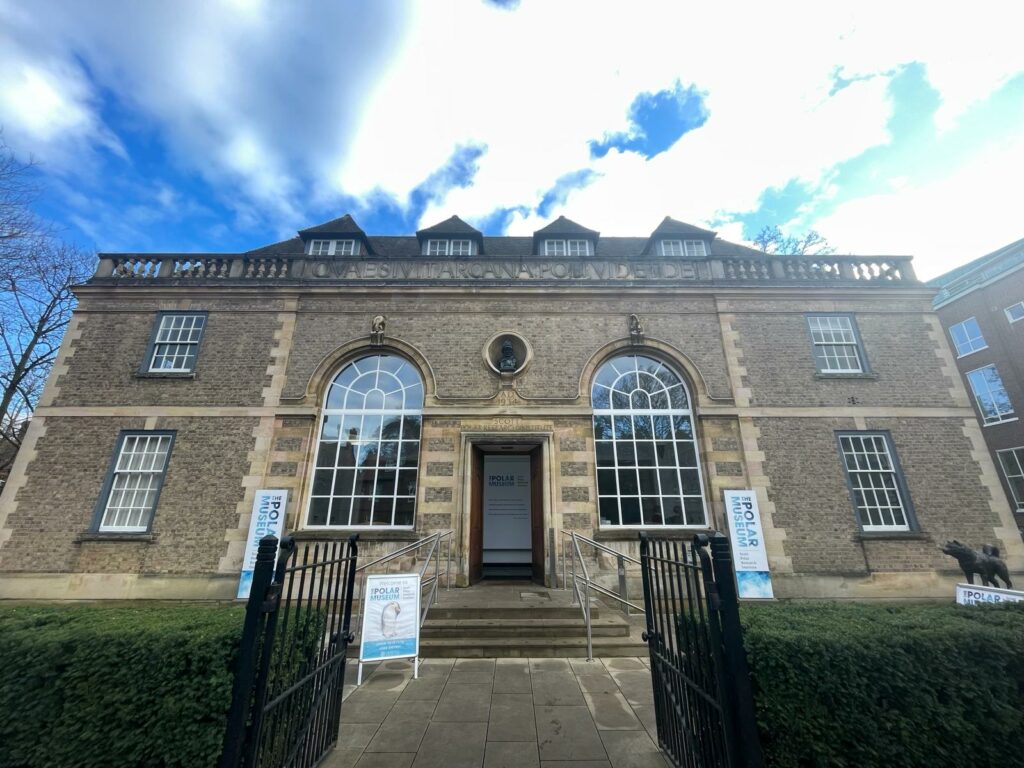
Their current exhibition features the life and work of Apsley Cherry-Garrard, a colleague and contemporary of Scott whose memoir The Worst Journey in the World documents the ill-fated Terra Nova exhibition. The library works closely with the Museum to showcase literary aspects of polar history in this fashion. The graduate trainees enjoyed this exhibition while enjoying tea and coffee with the SPRL’s librarian, and its small team of library assistants, who chatted with us about their backgrounds in librarianship and elucidated the unique challenges that arise from running such a specific collection.
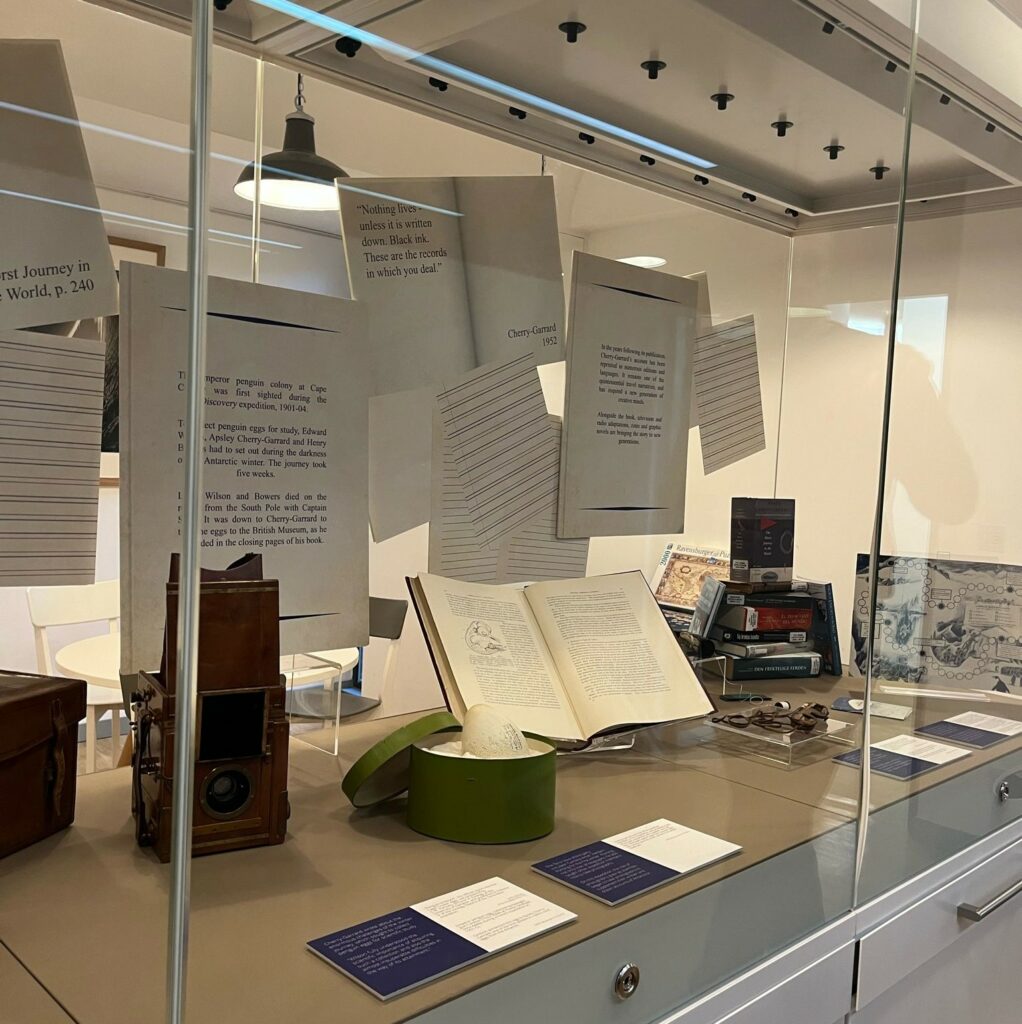
Uniquely amongst Cambridge libraries, the librarian reports to the head of the institution itself. That said, the SPRL shares a collaborative relationship with the University Library, who aided in a long-standing project to add the entire physical catalogue of the SPRL – in particular, its card catalogue of journals – to iDiscover, the university’s online catalogue. The library is currently shifting to eJournals where possible, and moving dead runs of physical journals to the UL’s offsite storage facility in Ely. These actions have restored the library to an impressive 79% of its holding capacity. Until fairly recently, journals here were indexed only in card-catalogue form. Digitisation is as such a common and often monumental task here – adding the SPRL’s collection of pamphlets to iDiscover required a lot of weeding, and the suppression of some 20,000 records.
The library curates an eclectic collection of journals that serves its particular niche very well. On the new issues shelf, Poromies, a Finnish journal dedicated to the needs of professional reindeer herders, proved popular amongst the grad trainees. All this to say that the SPRL is a small and quiet library with a deeply devoted group of scholars who rely on the resources they can access nowhere else. To this end, The library uses an in-house classification system geared towards their area of study, and based on the Universal Decimal Classification scheme. Though this Polar UDC is used by other libraries, the SPRL librarian is at liberty to adapt and update its subject indexing where archaic and non-specific cultural terms have been used. To this end, the library actively engages with DALAM – that is, the Thematic Network on Decolonization of Arctic Library and Archives Metadata – a group established for this purpose.
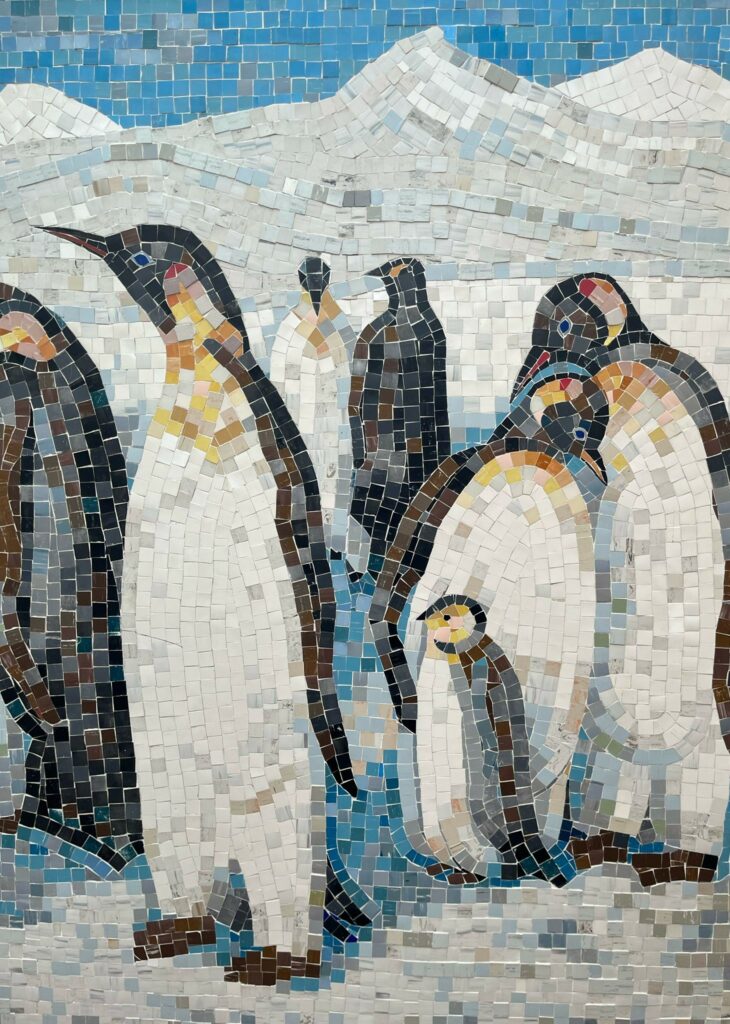
After discussing these aspects of librarianship, the grad trainees took a guided tour of the library. New additions include microfilm and microfiche reader/scanners, which remain ever-useful for accessing collections of this type, and a DVD player, to allow users to access this aspect of the collection. Indeed, the SPRL is reference only, which, we were told, proved a problem during the pandemic when students attempted to access resources remotely – “Screenreaders have some difficulty reading Inuktitut.” As such, the library had to allow a degree of lending, the legacy of which means the polar students are welcome to take their reading upstairs to the postgraduate computer lab – “but not out of the building.” In this silent study space, a corps of students are hard at work. The SPRL hopes to soon find space for non-silent study, as polar research has a distinctly international flavour, and video-conferencing is a must. In a sunny room housing back issues of journals, each student has their own desk.
Back downstairs, the trainees admired an interesting display kindly constructed by the archivist, featuring a variety of polar ephemera, including menus, diaries, and some of the few Antarctic publications in existence. The archive is also a place of deposit for the publications of South Georgia Island, location of a British Antarctic Survey research base, and resting place of Shackleton.
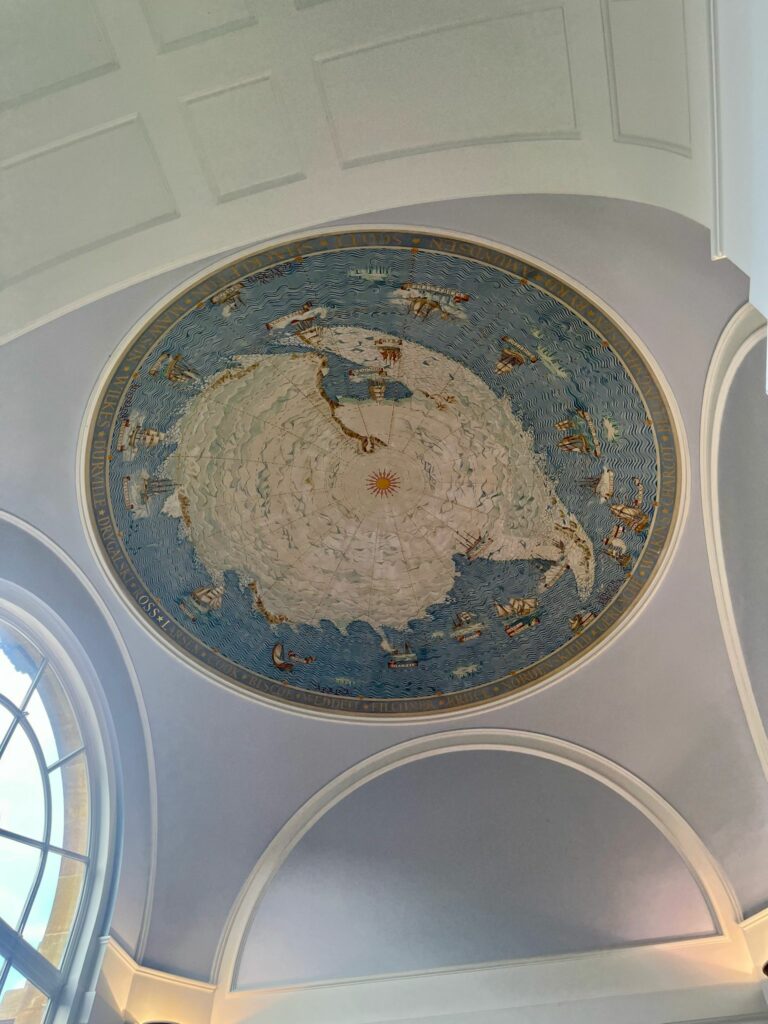
In the basement storage, we considered how one might catalogue such a varied and niche collection. Books written in an array of languages line the walls here – the librarian, pointing out a dead run of Russian journals, invited the grad trainees to consider how collection upkeep should be prioritised, and at what point space-saving by moving items off-site may defeat the point of conserving a specific collection. Down here rolling stacks hold thousands of boxed pamphlets – newly catalogued – though many items, particularly those in other languages, await this attention. The basement’s Leslie Walls Room holds the library’s map collection, which is catalogued by two volunteers: some 4000 of 18,000 have been processed since the current librarian took up their role. Which maps should be tackled first? A current research project, we were told, is using these resources to cross-reference and track the effects of climate change upon polar ice across history, proving just how relevant these collections may be, and how urgent their need to be catalogued. The basement is shared with the Scott Polar Research Museum – explaining the many model ships that intersperse the stacks of books and boxes. “I plan to replace at least one with an Inuit dancing owl,” explains the librarian. “SPRI isn’t just about exploration, but about these regions, and their people, as a whole.”
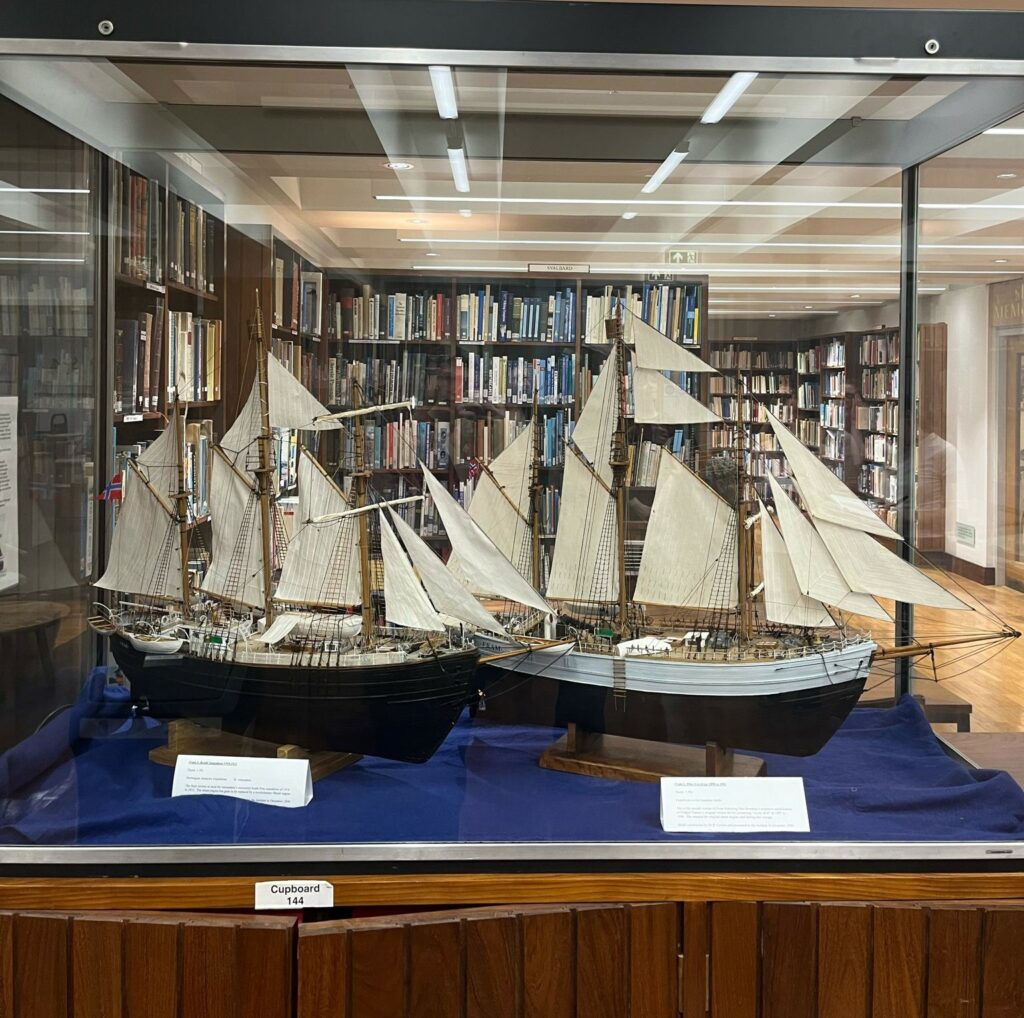
Next the trainees observed the special collections, of which the library holds around 2000 items, of separate intake to the archive. The old library here was built in the 1930s, and the graduate trainees were asked to consider conservation, not only of collections themselves, but of the spaces that house them. Budgeting for furniture and resources that are in keeping with a historical library can take a significant chunk out of precious funds. Even with these concerns in mind, the SPRI, despite its niche, manages to house a very broad church of material, from indigenous recipe books, to childrens’ picturebooks, to polar-themed Mills & Boon. One of the jewels of their special collections, however, is their first edition of the Voyage of the Discovery, signed on title-page by their namesake Scott himself. Editions of both the Polar Times and Aurora Australis share the title of being the only publications belonging to Antarctica proper.
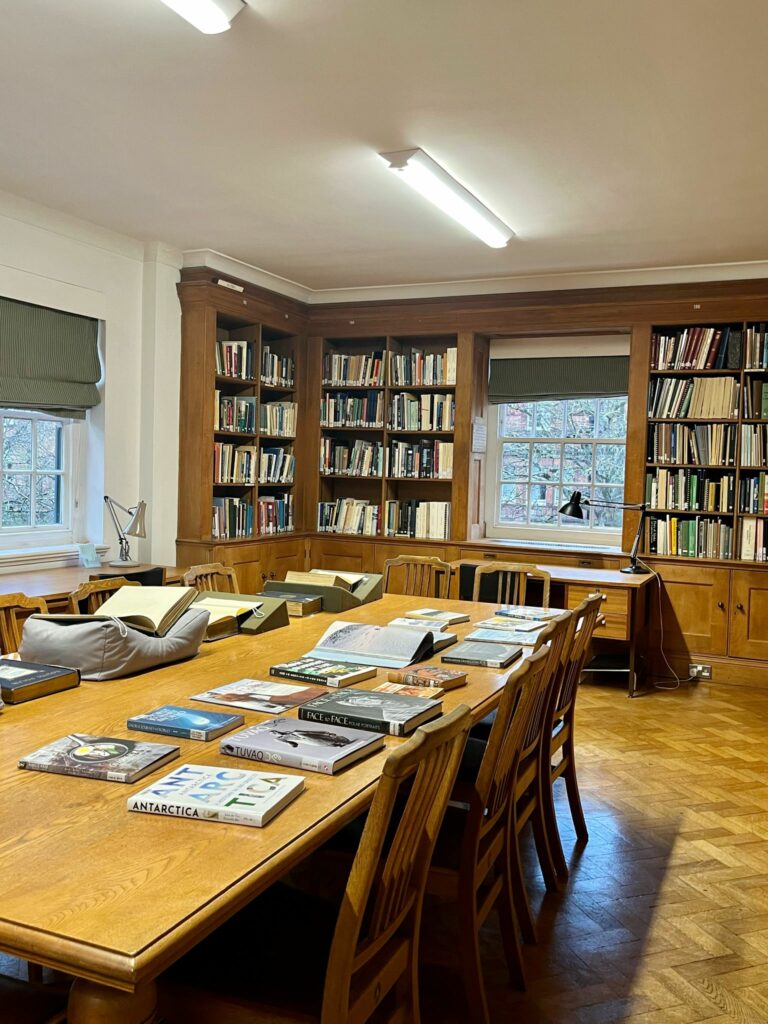
The graduate trainees would like to thank the staff at the Scott Polar Research Library, who were nothing but informative and accommodating. Simply chatting with other librarians about their respective and often storied career paths is perhaps one of the most valuable parts of the graduate traineeship, and between that and the fascinating collection, the trainees left wonderfully well-informed! We will be sure to return to the SPRL, and her sister museum, soon.
